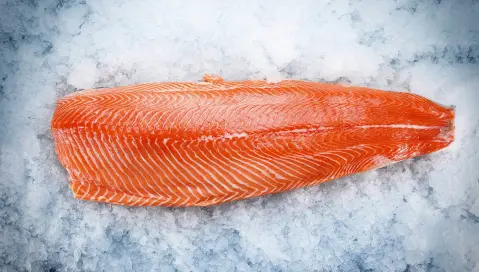The Importance of Catch Weight for Your Seafood Company
The Importance of Catch Weight for Your Seafood Company
The Importance of Catch Weight for Your Seafood Company
13 Janv 2021
Casper Brundel
With around 200 million seafood companies worldwide, there are plenty of businesses involved in the sector. They take on a variety of roles including hunting, farming, processing, conservation, storage, transportation and the selling of seafood (by)products. The industry is made up of a variety of roles and companies will often combine multiple activities as part of their business.
Fish processing is one of the more common activities with many seafood companies. This includes the filleting or slicing of the incoming or caught fish. As a company, you want to keep track of this often-manual process, and ensure it is done efficiently to guarantee the best returns from your goods. However, since the fish that will be processed will vary in weight per unit, your IT and inventory management system will need to be able to consider this.
Maximize Efficiency in the Production Process
In this blog we outline some challenges that seafood companies need to overcome to ensure success, and how food-specific ERP software can help maximize efficiency in the production process.
To correctly manage your inventory as a seafood processor, you need to account for and price different sizes of processed fish with variable weight functionality. This will ensure your items are priced correctly and that you get the best value from retail customers.
Another common challenge within seafood processing is the requirement to process multiple (by)products out of one fish unit. For instance, one whole fish will be converted into a filet unit but by-products like the head and tail also need to be registered. This requires a system that can make a distinction between the multiple outcomes out of one fish unit. As a consequence, one kilo of seafood input will not convert into a fixed number of outputs. Depending on the individual sizes of the units, the number of outputs you can register will vary.
This unique requirement will pose a substantial challenge to your business if your software system is not able to process it correctly and provide you with accurate and reliable data on how the business is performing.
Food Specific Software Solution
While these are just a few of the unique challenges that your seafood company will face, one thing is clear. A one-size-fits-all business software solution is not the right way to grow your company to new heights. If you are interested to read more about all the specific challenges and solutions for the seafood industry.
With an industry-specific software system in place, you’ll be able to identify and tackle all the common challenges within your specific sub-industry. In addition, you will also be able to monitor all processes more effectively, using insightful data for areas to improve within your business. Industry margins are often small, and adjustments to improve efficiency can prove very important.
If you’re interested to hear more about the possibilities of an Aptean Food & Beverage ERP software system bespoke for your seafood business, please get in touch with our team of food and beverage experts here.
Prêt à rationaliser vos opérations avec des solutions spécifiques ?
Notre ERP dédié à la transformation de la viande et des produits de la mer est une plateforme qui favorise le changement positif, un moteur de croissance qui prépare votre entreprise pour l'avenir.



